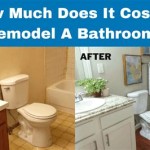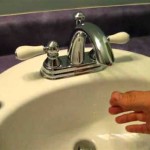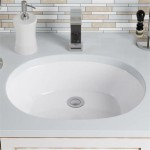How to Get Rid of Humidity in the Bathroom
Bathrooms are inherently humid environments due to the presence of water from showers, baths, and sinks. This humidity can create a breeding ground for mold and mildew, damage surfaces, and make the bathroom feel uncomfortable. To combat these issues, it is crucial to implement strategies for reducing humidity in your bathroom.
1. Ventilation is Key
Proper ventilation is the cornerstone of controlling humidity. The most effective way to ventilate your bathroom is through a properly functioning exhaust fan. When showering or bathing, ensure the exhaust fan is turned on and running continuously. After use, allow the fan to run for an additional 15-20 minutes to effectively draw out moisture.
If your bathroom lacks a ventilation fan, consider installing one. Modern exhaust fans come in various sizes and styles to suit different bathroom layouts. Ensure the fan has a high enough CFM (cubic feet per minute) rating to effectively remove moisture from the space.
In addition to an exhaust fan, opening a window for natural ventilation can also help to reduce humidity. If you have a window in your bathroom, open it slightly after showering to allow fresh air to circulate.
2. Minimize Moisture Sources
To reduce humidity, it's essential to minimize moisture sources beyond just showering. This includes taking shorter showers, wiping down surfaces after use, and preventing water from pooling on the floor.
Consider using a shower curtain liner made of a material that dries quickly, such as polyester or vinyl. Avoid using cloth or fabric shower curtains, as these can become damp and exacerbate humidity levels.
After showering, wipe down the shower walls and floor with a squeegee to remove excess water. This simple action prevents moisture from lingering on surfaces and contributing to humidity.
3. Dehumidifiers for Extreme Cases
In cases of extreme humidity, a dehumidifier may be necessary to effectively combat moisture. Dehumidifiers work by removing moisture from the air, making the environment drier and less hospitable to mold and mildew growth.
When selecting a dehumidifier, consider the size of your bathroom and the average humidity levels. A larger dehumidifier with a higher capacity is needed for larger bathrooms or areas with high humidity.
It is important to note that a dehumidifier should not be a replacement for proper ventilation. Using a dehumidifier alongside a functioning exhaust fan is often the most comprehensive approach for tackling humidity in the bathroom.
While dehumidifiers are effective, they can be energy-intensive. It's vital to choose an energy-efficient model and use it only when necessary to reduce energy consumption and associated costs.
By implementing these strategies, you can effectively control humidity in your bathroom, creating a more comfortable and healthy environment. Remember, a dry bathroom is a bathroom less susceptible to mold, mildew, and other moisture-related problems. Regular maintenance and attention to these simple steps will lead to a cleaner and healthier bathroom for you and your family.

10 Ways To Reduce Humidity In The Bathroom Point2 News

How To Lower Humidity In Your Home Causes And Solutions

How To Prevent Bathroom Mold From Taking Over Allergy Air

How To Reduce Humidity In Your Bathroom Bath Fitter

Stop Bathroom Condensation Once And For All

Bathroom Dehumidifier How To Reduce High Humidity In Your Morris Direct Nov 2024 Update

5 Ways To Keep Your Bathroom Dry And Mold Free House Cleaning Greenville Maid Services Busy Beez

How To Reduce Humidity In Your Bathroom Bath Fitter

How To Reduce Humidity In The Bathroom Without A Hood Life S

How To Reduce Humidity In Your Bathroom Bath Fitter
Related Posts







